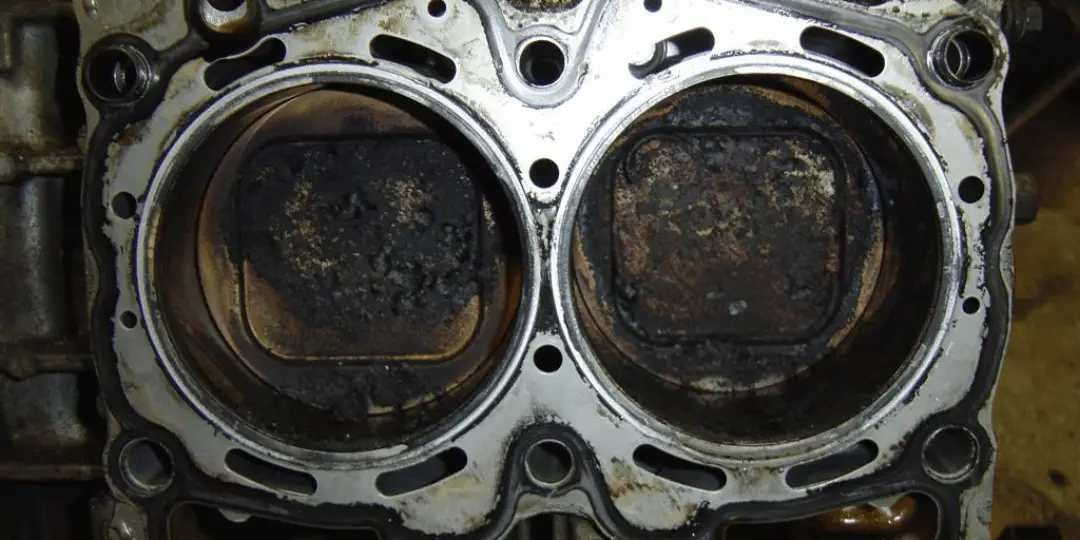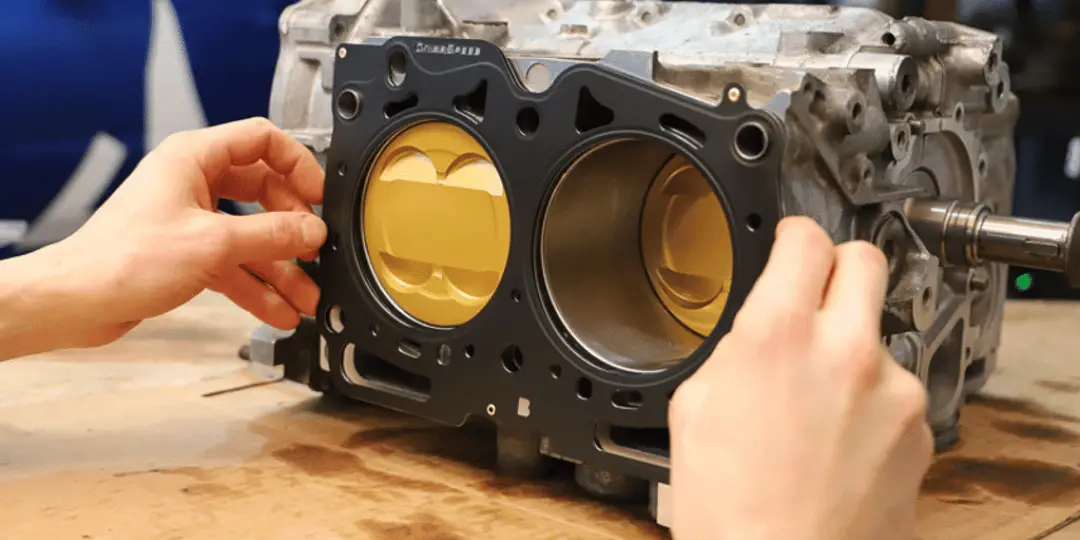A query brewing among Subaru car owner groups that’s akin to a trapped bee in a container revolves around the worthiness of fixing Subaru gaskets. As a proud Subaru owner, this thought may have likely materialized in your mind as well. Subarus, recognized for their enthusiastic fanbase and stellar durability, have always been praised as the best value for money. However, like every engine, they’re not immune to their share of problems. A challenge that tarnishes their reputation is their infamous propensity for failure concerning the Subaru head gaskets (OEM). The question then arises – is it worthwhile to invest time and money in solving this issue or is it a pricey dilemma best left untouched? Stay tuned as we navigate the path of Subaru repair – diving metaphorically under the hood to probe the pros and cons of this debatable resolution. Fasten your seat belts and shift into every gear in this pursuit for clear understanding about what lies ahead.
Brief On The Role of the Head Gasket

The head gasket in a Subaru serves as a sealing layer between the cylinder head and the engine block. It is crucial in preventing leaks of engine coolant and oil, which could otherwise seep into the cylinders and cause severe engine damage. The head gasket absorbs the extra energy between the two metal components and keeps the oil in the appropriate passages and the coolant in the right coolant lanes, hence acting as a crucial component of the cooling system. If you have a blown head gasket however, the engine can’t handle the excess pressure, leading to leaks, potential engine damage, and ultimately a major repair job.
Recap of Head Gasket Failure Prone Subarus
Many Subaru models, particularly those fitted with the 2.5-liter engines, have been frequently reported to suffer a blown head gasket. These issues have been primarily associated with internal leaks into the combustion chamber (in models with the 1st gen EJ25D 2.5 liter engine) and external leaks (in models with the EJ251, EJ252 and EJ253 2.5 liter engines). These leaks can lead to a variety of problems, from overheating to engine misfires and even engine failure in severe cases.
How Can You Tell When Your Subaru Head Gasket Needs To Be Replaced?

Identifying a blown head gasket may involve noticing symptoms such as excessive white smoke from the exhaust, engine misfires, an illuminated Check Engine Light, low coolant levels, and a milky appearance to the engine oil. Another typical sign is the smell of burning oil or overheating after extended drives. However, these symptoms may not always be present, or they may be easily mistaken for other issues. In some cases, you will notice that you’re losing coolant at an abnormally fast rate. Keep in mind that coolant leaks can present themselves internally and externally. For example, if the coolant enters the combustion chamber, you’ll notice smoke from the exhaust, but if it’s leaking externally, you’re more likely to notice a sweet smell around the car.
Common Symptoms of A Blown Head Gasket
- Excessive White Smoke: If you notice vast amounts of white smoke coming out of your exhaust when starting your car, it could be due to failed head gaskets. This issue arises when the head gaskets fail, allowing engine coolant to leak into your engine’s combustion chambers.
- Running Rough/Misfiring: Engine misfires may be due to coolant getting into the wrong parts of your engine, which can disrupt efficient combustion.
- Check Engine Light: The engine computer may detect irregularities in the engine’s operation due to coolant entering the combustion chambers, triggering the Check Engine light.
- Low Engine Coolant Level: When head gaskets fail, they can cause coolant to enter parts of the engine it shouldn’t, leading to a reduction in coolant levels.
- Milky Engine Oil: If your engine oil appears milky white, it could be a sign that coolant has mixed with the engine oil, indicating head gasket damage.
Related: Subaru Dashboard Lights And Meanings
What Is Included In The Repair?
Replacing a blown head gasket is a comprehensive process that may involve replacing other engine components as well. The repair often includes cylinder head resurfacing, the installation of new head gaskets, new cylinder head bolts, a new thermostat and gasket, new valve cover gaskets, new exhaust gaskets, and an oil and oil filter change. Other items that may need to be replaced during this repair include timing belts, water pumps, and spark plugs.

How Long Does The Repair Take On Average?
Subaru head gasket repairs can typically take two to three days, depending on the scope of the damage and parts availability. The repair process involves disassembling the engine, replacing the failed components, and then reassembling the engine. This lengthy process allows technicians to thoroughly assess the vehicle, road test it, and conduct a final quality assurance inspection.
Are There Other Repairs I Should Consider Doing At The Same Time?
Given the extensive labor involved in a head gasket repair job, it’s often financially prudent to replace other high-wear parts simultaneously. Items such as timing belts, tensioners, oil seals, water pumps, and spark plugs could be replaced concurrently if they haven’t been replaced recently. Having these parts checked and replaced, if necessary, can save on labor cost and prevent potential future breakdowns.
Other common problems to be aware of:
– Subaru Legacy Problems: Too Much To Handle?
– Subaru Forester Problems: Too Much To Handle?
– Subaru Impreza Problems: Too Much To Handle?
– Subaru WRX Problems: Too Much To Handle?
– Subaru Battery Problems: Causes, Solutions, & Prevention
What’s The Average Subaru Head Gasket Replacement Cost?
The cost of replacing a Subaru head gasket can range between $1,500 and $3,000 depending on the vehicle’s make and model, and the extent of the damage. This figure includes the cost of parts and labor. The actual cost can vary greatly based on the specific issues that need to be addressed and the parts required for the repair.
Related:
– Are Subarus Expensive To Fix and Maintain? Yes and No
– Subaru Starter Replacement Cost: What You Need to Know
– Subaru Clutch Replacement Cost: What You Need to Know
– Subaru Transmission Replacement Cost: What You Need to Know
Is It Worth Paying This Cost?
The decision to repair a blown head gasket should be based on several factors. If the vehicle is in otherwise good condition and has a high resale value, the repair may be a worthwhile investment. However, if the car is older and has additional issues, the cost of repair may exceed the vehicle’s value, making the repair less feasible.
Clarification: Can A Head Gasket Be Repaired or Only Replaced?
A head gasket in a Subaru typically cannot be repaired, meaning the only fix will be to replace the head gasket. Once you’ve encountered a head gasket failure, it loses its ability to effectively seal the engine block and cylinder head, leading to significant issues. Repairing it is not feasible; replacement is the standard and most effective solution.
After The Repair, Should I Be Aware of Any Ongoing Issues?
Once you replace the head gasket, there should not be any ongoing issues directly related to the repair if it was performed correctly. However, it’s essential to continue regular vehicle maintenance to prevent future problems. For instance, maintaining regular oil changes and coolant level checks can help prolong the life of your new head gasket.
How Long Should the New Head Gasket Last?
Usually, a replacement head gasket should last as long as the original, typically between 100,000 and 150,000 miles. Regular maintenance, such as timely coolant replacement and thermostat replacement, can help prolong the life of your Subaru head gasket. It’s worth noting, you should absolutely return to the repair shop if your head gasket fails relatively soon after the work was completed.
What’s The Average Warranty for A New Head Gasket?
Warranty terms for a head gasket replacement can vary based on the repair shop or dealership. However, most places offer at least a 12-month or 12,000-mile warranty on parts and labor for a head gasket replacement. Some may even offer longer warranties of up to three years or 36,000 miles. It’s essential to clarify the warranty terms before proceeding with the repair.
What Makes Subaru Head Gaskets Fail So Frequently?
One of the main reasons for a blown head gasket in Subarus is the type of head gasket used. Some models were fitted with a single-layer gasket with a graphite coating, which was known to chip or peel off around 100,000 miles. This led to the gasket’s inability to seal correctly, resulting in leaks. Thankfully, Subaru has acknowledged the issue and started using different head gaskets from 2014 onwards, which has largely rectified the issue.
In conclusion, the decision to repair a Subaru head gasket depends on several factors, including the car’s overall condition and the cost of the repair. Regular maintenance can help prevent head gasket failures and extend the life of your Subaru, and if you can avoid any ongoing head gasket issues in the meantime it certainly won’t hurt.
More Subie stuff:
– Subaru Outback Years to Avoid: A Comprehensive Guide
– Subaru Impreza Years to Avoid: A Comprehensive Overview
– What Subaru Legacy Years To Avoid? A Tainted Legacy
– Forester Years To Avoid (+Worst Of Them All)
Frequently Asked Questions
The most common signs of gasket issues in Subaru vehicles include noticeable oil leaks, especially around the engine block; overheating of the engine, which might be evident from the temperature gauge or warning light on the dashboard; and white smoke coming from the exhaust, which can indicate coolant leaking into the combustion chamber. Additionally, you might notice a milky substance under the oil cap, a sign of coolant mixing with the oil, or a decrease in the coolant level without any apparent leaks. These symptoms can vary in severity, but it’s important to address them promptly to avoid further engine damage.
The cost to fix a gasket in a Subaru can vary widely depending on the model, the severity of the issue, and the region where the repair is done. On average, the cost ranges from $1,500 to $2,500, including both parts and labor. This price can be higher for more complex models or if additional repairs are needed. The gaskets themselves are not overly expensive, but the labor costs can be substantial due to the extensive work required to access and replace the gasket.
Whether it’s more cost-effective to fix a Subaru gasket or replace the engine depends on the overall condition of the vehicle and the extent of the damage. If the gasket issue is caught early and the rest of the engine is in good condition, repairing the gasket is usually the more economical choice. However, if the engine has sustained significant damage due to the gasket failure, or if the vehicle is older with high mileage, replacing the engine or even the car might be more cost-effective in the long run. It’s advisable to get a professional assessment of the engine’s condition before making a decision.
The longevity of a Subaru gasket repair can vary, but generally, a properly executed repair with quality parts should last for many years. The key factors influencing the durability of the repair include the quality of the replacement gasket, the expertise of the mechanic performing the repair, and the subsequent maintenance of the vehicle. If high-quality parts are used and the vehicle is well-maintained, a new gasket could last as long as the original, often reaching upwards of 100,000 miles or more. Regular maintenance and timely oil changes can extend the life of the new gasket.